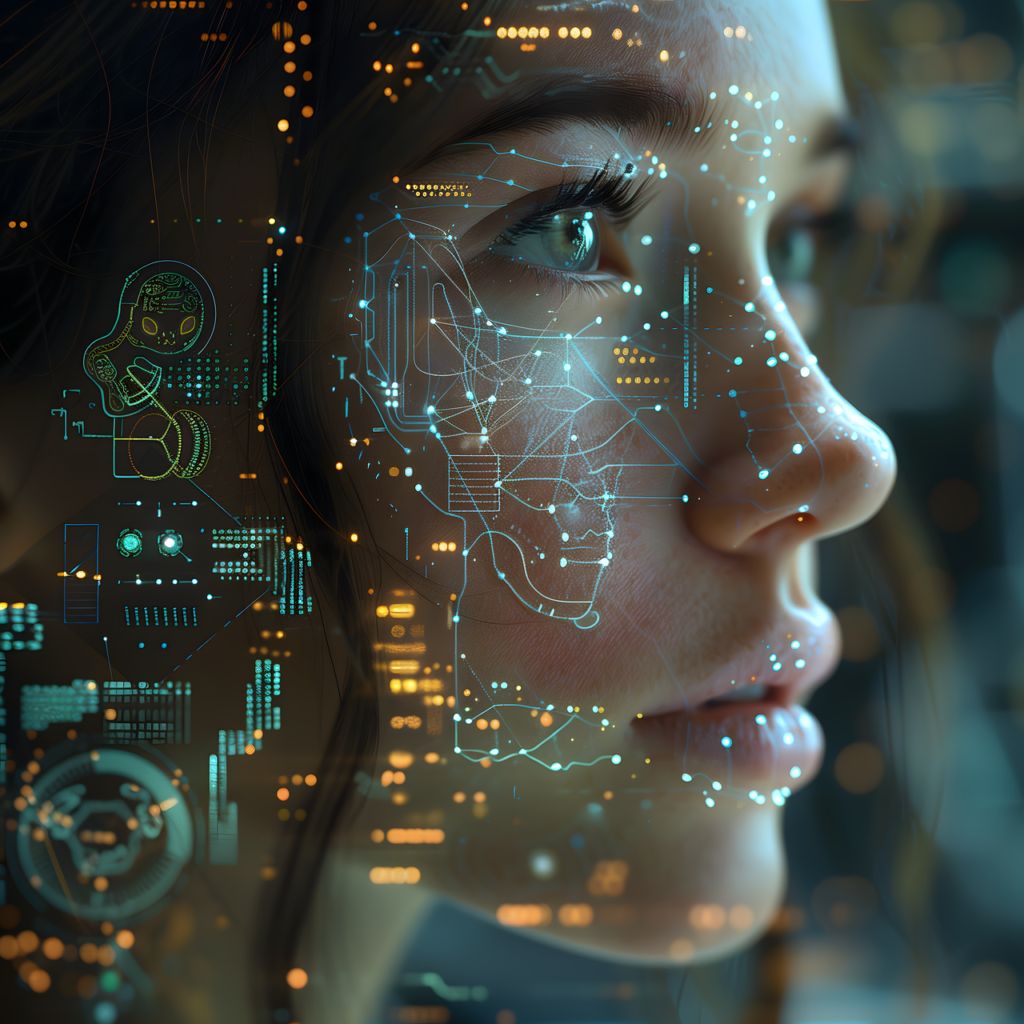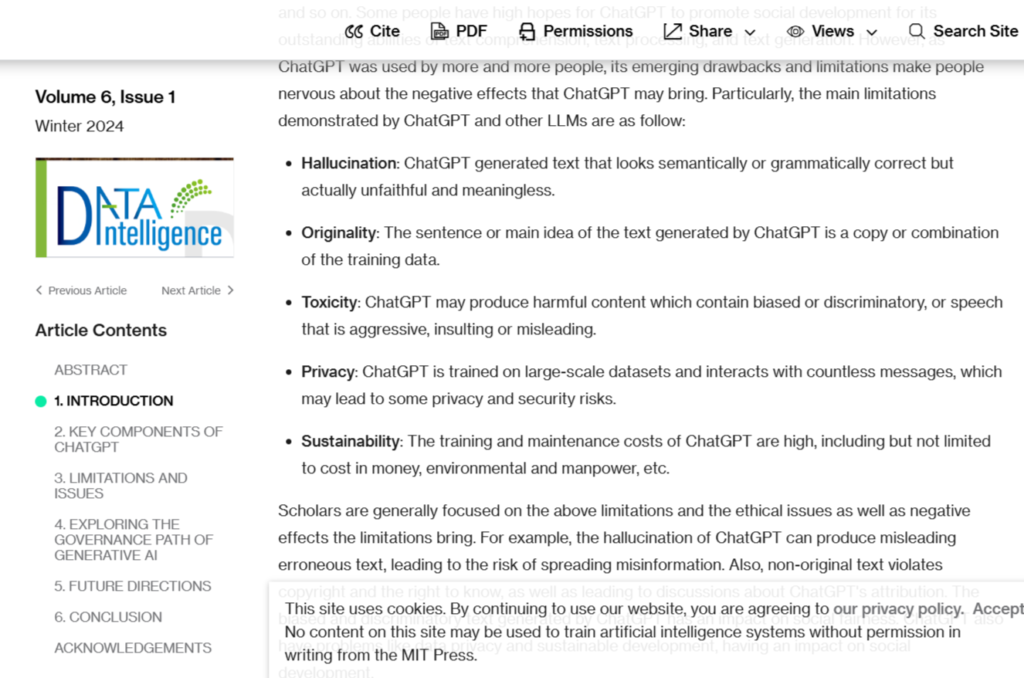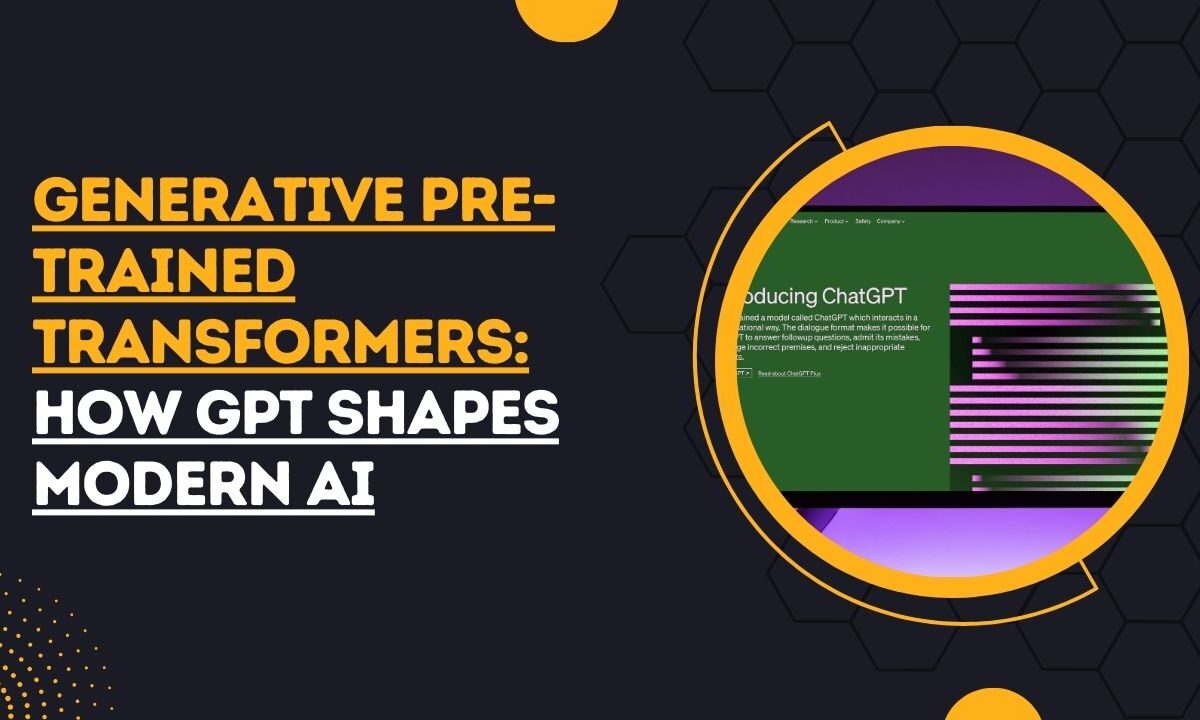Generative Pre-Trained Transformers: How GPT Shapes Modern AI
Generative Pre-Trained Transformers (GPT) are more than just AI models; they are reshaping fields from customer service to creative writing. They are offering machines a semblance of contextual understanding.
With over 175 billion parameters, OpenAI’s GPT-3 has set a new standard in natural language processing. In fact, it is transforming AI’s ability to understand and generate human language.
As AI advances, GPT models lead the way in bridging human-machine communication, raising exciting possibilities—and serious ethical questions—about the future of artificial intelligence.
1. Introduction to Generative Pre-Trained Transformers (GPT)
Generative Pre-Trained Transformers (GPT) represent a groundbreaking leap in artificial intelligence, redefining how machines understand and generate human language.
Developed by OpenAI, these models have evolved rapidly, setting new standards in natural language processing (NLP) and transforming applications in industries ranging from content creation to customer support.
Understanding GPT involves diving into its unique structure, training processes, and the significant societal implications of this technology.
2. What is GPT? A Conceptual Overview
GPT is a type of language model designed to generate text that closely resembles human writing.
As a “Generative” model, GPT can produce new content based on input prompts, and it’s “Pre-Trained,” meaning it’s trained on massive datasets before being adapted (or fine-tuned) for specific tasks.
GPT’s goal is to predict and generate the next word in a sequence, allowing it to engage in conversations, complete sentences, write essays, and much more.
3. Evolution of GPT Models: From GPT-1 to GPT-4
Since its inception, GPT has undergone several major iterations, each adding enhanced capabilities and scope:
- GPT-1 laid the foundation, using unsupervised learning on a large dataset.
- GPT-2 expanded its capacity, shocking the AI community with its ability to generate coherent, contextually accurate paragraphs.
- GPT-3 introduced a massive jump in model size, with 175 billion parameters, allowing for impressive applications in language understanding and generation.
- GPT-4 built upon GPT-3’s advancements, with enhanced precision, fewer biases, and the ability to respond better across diverse contexts and languages.
Each version has added depth and refinement, pushing the boundaries of what is possible in AI-powered language understanding.
4. The Architecture of GPT: How Transformers Work
GPT is based on a transformer architecture, which relies heavily on attention mechanisms. Key components include:
- Self-Attention: Enables the model to focus on different parts of a sentence when predicting the next word, ensuring contextual accuracy.
- Feedforward Layers: Layers that process each token through multiple stages, adding depth to the model’s predictions.
This architecture enables GPT to manage complex dependencies between words and maintain context over long text sequences, making it effective at generating coherent responses.
5. Pre-Training and Fine-Tuning: The Core Processes in GPT
GPT’s journey begins with pre-training, where it learns language patterns and structures from vast datasets without specific guidance.
This is followed by fine-tuning, where the model is adjusted for specific applications.
Such fine tuning helps in making it better at understanding the nuances of various tasks. Fine-tuning allows developers to customize GPT for industries like healthcare, finance, and education.
6. Unsupervised Learning in GPT: A Key Advantage
A significant strength of GPT lies in its unsupervised learning approach, where the model learns from raw text without labeled data.
This ability to work with unlabeled data allows GPT to learn vast linguistic patterns and structures, making it both scalable and highly adaptable across languages and topics.
7. The Role of Tokens and Tokenization in GPT
Tokenization is the process of breaking down text into smaller parts, or tokens, which GPT uses to understand and generate language.
These tokens can represent words or parts of words, allowing GPT to process text in various languages, manage complex sentence structures, and even handle nuanced expressions and slang.
8. GPT and Natural Language Understanding (NLU)
GPT models excel in natural language understanding (NLU), the ability to interpret human language.
Natural Language Understanding (NLU) is a subset of Natural Language Processing (NLP) that focuses specifically on enabling machines to comprehend the meaning behind human language.

Essentially, NLP encompasses a broader scope. It includes text generation and translation. However, NLU is concerned with interpreting context, intent, and extracting relevant information from language.
This capability is vital for applications requiring comprehension and interaction, such as virtual assistants and automated customer service.
However, GPT’s NLU is not perfect, as the model sometimes struggles with ambiguous or contextually complex questions.
9. Contextual Learning and Memory in GPT Models
One of GPT’s defining features is its contextual learning, which allows it to maintain the flow of a conversation or narrative by remembering the context over a series of prompts.
However, memory in GPT is limited to the “window” of tokens it can process at once, impacting its performance in very long dialogues or documents.
10. Applications of GPT Across Industries
GPT’s versatility allows it to impact numerous industries:
- Business: Automating report generation, customer support, and data analysis.
- Healthcare: Assisting in medical documentation, patient communication, and predictive diagnostics.
- Education: Creating personalized tutoring systems, grading assistance, and content generation.
- Creative Arts: Helping writers, artists, and musicians brainstorm, draft, and refine ideas.
GPT’s ability to generate coherent, high-quality content makes it a valuable tool across these diverse fields.
11. Ethical Concerns and Responsible Use of GPT
The power of GPT raises ethical questions.
Its ability to generate human-like text can lead to misinformation, spam, and other malicious uses.

Image Source : Direct.mit.edu
Addressing these concerns requires implementing content filters, promoting transparency in usage, and encouraging developers to consider ethical implications.
12. Privacy and Security in GPT Deployments
Privacy is a growing concern in AI.
Ensuring that GPT deployments do not compromise user data requires safeguards, including limiting data storage and encryption.
OpenAI and other organizations are also researching ways to prevent GPT from inadvertently generating sensitive information, balancing functionality with privacy.
13. The Power of OpenAI’s API: Accessibility of GPT Models

OpenAI’s API has made GPT accessible to a wide audience, from individual developers to large companies.
This accessibility has democratized AI, allowing startups, smaller businesses, and hobbyists to leverage GPT in innovative ways.
14. Comparing GPT with Other Language Models
GPT competes with other language models, like Google’s BERT and T5, each with its unique strengths:
- GPT: Excels in text generation, summarization, and conversational tasks.
- BERT: The acronym stands for Bidirectional Encoder Representations from Transformers. It is Specialized for understanding context within sentences, making it suitable for search engines and question-answering.
- T5: T5 is text to text transfer transformer. It is Known for its flexibility in performing a variety of NLP tasks.
Each model is suited to different applications, with GPT being particularly valued for tasks requiring creativity and text generation.
15. Limitations and Known Challenges of GPT
Despite its strengths, GPT has limitations, such as hallucinations (creating plausible but false information) and a knowledge cutoff date.
These issues require oversight in practical applications, especially in fields where accuracy is crucial.
16. The Future of GPT: Next-Generation Models and Innovations
The future of GPT holds exciting prospects.
Potential developments include multi-modal models (handling text, images, and possibly audio) and improvements in memory retention.
These advancements could unlock more complex, human-like interactions and expand GPT’s utility across sectors.
17. Impact of GPT on AI and Society: Long-Term Implications
GPT has transformative potential. As it matures, GPT may redefine how we interact with machines, work, and communicate.
The model’s applications in content creation, customer service, and education have already demonstrated its impact, with more profound changes likely to emerge.
18. How to Start Using GPT: Tools, Resources, and API Access
To begin using GPT, OpenAI provides API access, enabling developers to integrate GPT into applications.
Additionally, various online resources, courses, and communities help newcomers learn how to harness GPT’s potential, making it easier than ever to get started with AI.
FAQs
1. What are the key differences between GPT and traditional AI models?
GPT differs from traditional AI models in its use of transformer architecture and unsupervised learning. While traditional AI models often rely on rule-based systems or supervised learning, GPT generates text based on patterns it has learned from large datasets without explicit programming rules. This allows GPT to produce more contextually relevant and natural-sounding text.
2. How can GPT be used for content creation?
GPT can be an invaluable tool for content creation. It can assist with writing articles, generating marketing copy, creating dialogue for video games, drafting emails, and even composing poetry. By leveraging its ability to understand and generate natural language, GPT can help streamline the content creation process for businesses and creatives alike.
3. What makes GPT different from other language models like BERT?
The primary difference between GPT and models like BERT is in their design and purpose. GPT is an autoregressive model focused on text generation, meaning it predicts the next word in a sequence. In contrast, BERT is a bidirectional model used for understanding the context of text, making it more suitable for tasks like question answering and sentiment analysis. GPT generates fluent text, while BERT excels at comprehension tasks.
4. Can GPT understand different languages?
Yes, GPT has been trained on text data in multiple languages, which allows it to generate and understand text across various languages. However, its performance may vary depending on the language and the amount of training data available for that language. While it performs exceptionally well in languages like English, its performance in less commonly spoken languages might not be as robust.
5. Is GPT capable of learning new information after its training?
No, GPT does not learn in real-time. Once it is trained, the model’s knowledge is fixed and cannot be updated without retraining. However, GPT can be fine-tuned with specific datasets to improve its performance on specialized tasks, but this requires additional training rather than the model adapting to new data autonomously.
6. How can I make my own GPT-powered application?
To build your own Generative Pre-Trained Transformers-powered application, you can use APIs offered by platforms like OpenAI. These APIs allow developers to integrate GPT’s capabilities into their applications for tasks such as text generation, language translation, and content summarization. No need to train a model from scratch—simply access the API and start incorporating GPT’s powerful features into your app.
Related Posts
Natural Language Processing (NLP) for Smarter Search Intent
Generative AI: Unlocking New Potential for Business Innovation
Foundations of Machine Learning: Unlock AI Secrets for Beginners
The Power of AI Content: Transforming the Digital World
Conclusion
Generative Pre-Trained Transformers (GPT) have redefined the potential of artificial intelligence in understanding and generating human language.
With each iteration, GPT models have pushed the boundaries of what AI can accomplish in natural language processing, impacting industries from healthcare to creative arts and setting a new standard for conversational AI.
By leveraging the transformer architecture, large-scale pre-training, and fine-tuning, GPT has become a versatile tool capable of remarkable contextual understanding and content generation.
However, the transformative power of Generative Pre-Trained Transformers (GPT) brings significant ethical, privacy, and security challenges. Addressing these responsibly is critical to ensuring AI serves humanity positively, balancing innovation with transparency and security

